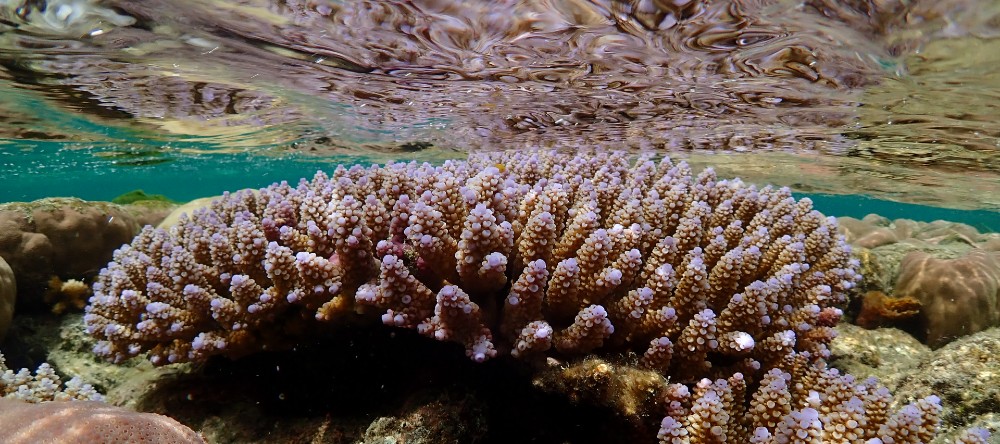- Research
Coral colonies that can withstand the heat do so at no apparent cost, finds new study
New research undertaken at the Palau International Coral Reef Center (PICRC) has examined the tradeoffs that coral colonies make to be more heat tolerant.
A warmer ocean will undoubtedly impact marine animals in numerous ways. Many species will need to migrate or adapt to survive. For corals, adaptation is the only choice, but this might come at its own cost. Scientists from Newcastle University, PICRC, the Australian Institute of Marine Science, and several other universities in Australia and the UK have taken a close look at a species of reef-building coral to see if colonies that are more heat tolerant pay for it in other ways. Their results, published in Communications Biology, were somewhat surprising.
“Coral colonies that are particularly heat tolerate should fare better in a warmer world, however, increased heat tolerance may have side effects,” said first author, Mr. Liam Lachs, a PhD student at Newcastle University, who regularly works with PICRC. “The coral might not grow as fast or might produce less eggs, which require significant energy to produce.”
If the temperature gets too high for coral, they release their symbiotic algae, which are necessary for their survival. The algae are what gives coral their color so when they’re released, the coral turns white (known as bleaching). This is becoming increasingly common as global ocean temperatures rise. Mr. Lachs and the team of scientists used the tanks at PICRC to expose fragments from 70 colonies of the reef-building coral Acropora digitifera to a long-term (5-week) marine heatwave. They recorded the day at which these coral fragments bleached or died. They also looked at coral colony growth over three years and the amount of spawning (called fecundity) to see if there were any negative side-effects of being more heat tolerant.
The group found remarkable variability in heat tolerance within the population. Some withstood the marine heatwave and were relatively unscathed, while others started bleaching almost immediately. Surprisingly, the group found no trade-offs between heat tolerance and fecundity or growth. In fact, faster growing corals were actually able to withstand higher levels of heat stress.
“Natural selection for coral heat tolerance may not necessarily have knock-on implications for colony growth or fecundity,” stated Mr. Lachs. “Ultimately though, to secure a future for coral reefs, the major challenge is still the reduction of carbon emissions to limit ocean warming.”
“We are happy that PICRC has the facilities and capability to host and participate in this important research, which contributes to better understanding of heat tolerance and how it might be used for coral restoration,” said co-author and former PICRC CEO, Dr. Yimnang Golbuu.”
Feature photo: The shallow-water coral, Acropora digitifera, is a common Indo-Pacific reef-building coral. Credit: Liam Lachs


